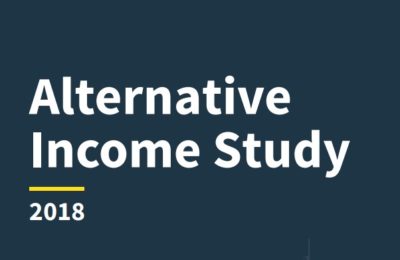 There has been plenty of talk about how insurers have been embracing alternative income strategies. Now, we have some insightful analysis to put against all the debate and understand more clinically what the expectations are for the future of alternative asset strategies.
There has been plenty of talk about how insurers have been embracing alternative income strategies. Now, we have some insightful analysis to put against all the debate and understand more clinically what the expectations are for the future of alternative asset strategies.
Aviva Investors recently commissioned an in-depth qualitative survey of over 250 top insurer and pension fund investment directors across Europe. The results, together with a wealth of analysis, commentary and insight, have been published in a new, 28-page report entitled the Aviva Investors Alternative Income Study.
The study takes a broad sweep through the assets that most typically feature in alternative income strategies – infrastructure debt, structured finance, infrastructure equity, real estate finance, private corporate debt and real estate long income. It explores the different preferences across Europe and reveals some significant variations.
The report finds that everyone is looking to increase allocations to alternatives – hardly a surprise in itself. More interestingly, European CIOs are rather more enthusiastic than their UK counterparts, and there are differing preferences with UK respondents focusing on private corporate debt and infrastructure equity while real estate long income and real estate finance are catching the eye in Europe.
The analysis explores the reasons why alternatives are proving more popular, the way changing regulation is influencing choices and how important it is to understand the risks and limitations. This brought to the fore concerns about access to expertise, a familiar theme of the audience surveys at Insurance Investment Exchange events.
“The extent to which institutional investors are able to build their exposure to alternative income assets may depend on the quality of their in-house expertise. Our findings indicate institutions are more wary about investing in asset classes in areas where they lack internal knowhow”, says the study.
“They also cited the high cost of implementing alternative strategies and difficulties identifying opportunities – along with regulation – as the biggest challenges they face when trying to build their exposure.”
Liquidity is dealt with in detail as the study asks whether it is friend or foe? It exposes some concerns about the degree to which insurers have understood the full implications of the illiquidity risk and whether they have focused on obtaining the appropriate premia.
“The need to withdraw from illiquid assets implies that the tolerance for illiquidity may not have been fully understood and monitored from the outset. In our view, extensive stress testing is essential to ensure that investors are not forced to make strategic shifts at short notice, potentially exposing them to liquidity shortfalls and adverse market conditions.
“Instead, private assets need to be chosen with a view to achieving a certain outcome – whether that’s generating long-term cash flows to match liabilities, inflation-linked revenue for real returns, or growth. With an intended outcome in mind, it is usually the case that assets are held to maturity”, concludes the study.
Most respondents acknowledged they needed the help of external partners if they are going to deliver their increase in target allocations to alternatives and the study offers practical advice on what expertise is needed and how to source it.
